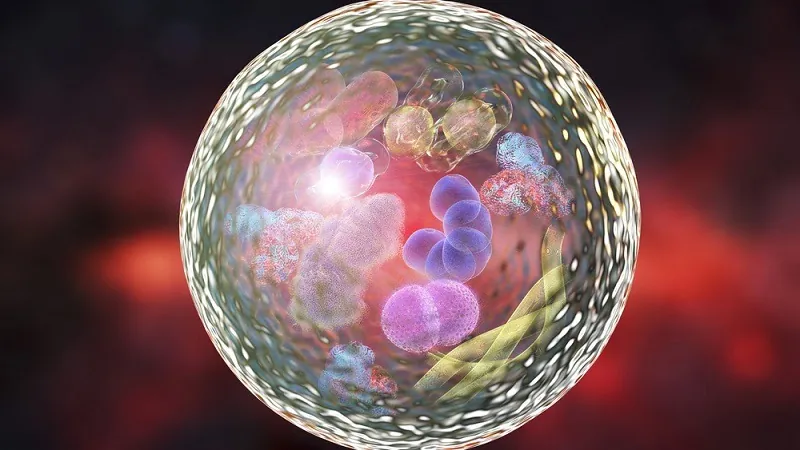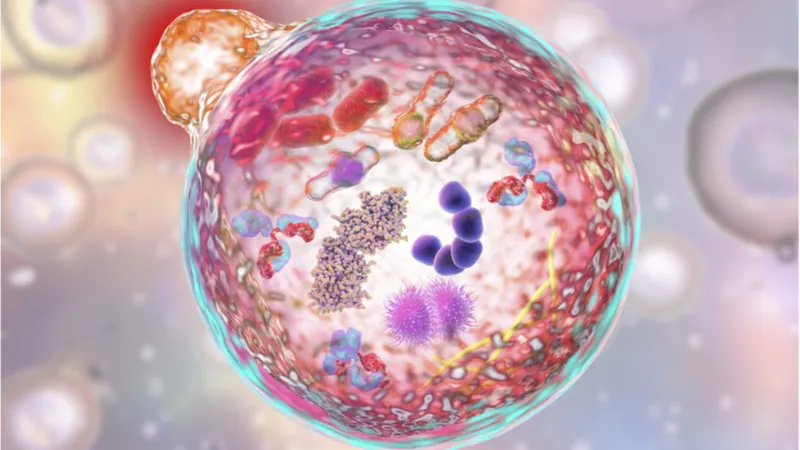What are Lysosomes? The Garbage Disposal System of the Cell
What are lysosomes?
A lysosome is a membrane-bound organelle, a sub-cellular structure that performs one or more tasks within the cell, much like an organ does in the body. They are part of the overall machinery of our cells along with other important cell organelles, which include the nuclei, the mitochondria, and ribosomes.
Lysosomes are the garbage disposal units of our cells, roaming around digesting cellular waste with their specialized enzymes and recycling excess or worn-out cell parts. Additionally, they may also be used to destroy invading viruses and bacteria.
You can find lysosomes in almost every animal eukaryotic cell, which are defined as having their nuclei enclosed within nuclear envelopes. At a basic level, they are vesicles, a structure consisting of liquid enclosed by a lipid layer.
How are lysosomes created?
The various digestive enzymes within lysosomes are created initially in the rough endoplasmic reticulum, a piece of cellular machinery whose function is to create proteins to support cellular function. The rough endoplasmic reticulum contains ribosomes, small organelles whose function it is to create those proteins.
The proteins are packaged into a vesicle and are then delivered to the Golgi apparatus, an organelle that moves molecules from the endoplasmic reticulum to their destination. The Golgi apparatus can also modify products created by the endoplasmic reticulum into their final form, which, in this case, are digestive enzymes. Once this is done, the Golgi apparatus packages this into a small vesicle, and new lysosomes are born. From that moment onwards, the brand new lysosomes float around in the cytoplasm inside the cell until it is needed.
What is the function of lysosomes?
Lysosome function is a important and highly regulated process. In essence lysosomes are tiny eating machines, and they start work as soon as the cell takes in nutrients. Once edible material enters the cell, the lysosomes home in on it, attach themselves to it, and deploy their digestive enzymes. The enzymes then begin to break down the complex molecules, including sugars and proteins, that make up the food.
So, what happens when nutrients are scarce and the cell starts to starve? Perhaps surprisingly, the lysosomes continue digesting even when there is no incoming food; instead, they start to digest other organelles in the cell for nutrients. This is known as autophagy, and the lysosomes are the agents of this process. Rather than discuss autophagy in full here, we have created another topic which delves further into that subject which you can read by clicking on the topic box below.

Read More
Lysosomes and their function declines during aging
It has been known for some time now that autophagy plays a key role in promoting longevity, with caloric restriction being reliant upon this mechanism in order to work and increase lifespan in multiple species. This makes sense when you consider that damaged, worn out, and excessive cellular components can lead to further damage to the cell if they are not removed promptly. Should the lysosomes fail to clear them up fast enough, then the result is an accumulation of waste and cellular garbage.
A good example of this can be seen in the mitochondria, the powerhouses of the cell. Mitochondrial dysfunction is one of the reasons we are thought to age, and studies suggest that variances in mitochondrial function and efficiency between species correlate strongly with lifespan. It is almost certainly the case that autophagy is important for longevity due to it removing damaged mitochondria from the cell, thus preventing them from causing further damage through the production of excessive free radicals.
So, given that lysosomes are the drivers of autophagy, it is hardly surprising that negative changes causing a decline of their function could be detrimental to lifespan. Unfortunately, in the case of aging, this is exactly what happens.
There are likely at least two key processes that drive the functional decline and eventual failure of the lysosomes during aging.
Accumulation of insoluble waste inside lysosomes
First, there are many biochemical substances that the lysosomes cannot break down and digest, and once the lysosome eats them, that insoluble waste is trapped there.
Lipofuscin is a great example of this indigestible waste, a mess of chemical byproducts created by the operation of our metabolism. This problematic waste accumulates in our cells as we age, as it is trapped inside the lysosomes and unable to be broken down. By the time we reach advanced age, our lysosomes are bloated from lipofuscin and are unable to work properly.
A possible solution to this problem is to help the cells break down insoluble waste trapped in the lysosomes. It may be possible to modify the lysosomes to give them new enzymes that are capable of breaking down lipofuscin and similar biochemical byproducts. Such enzymes must surely exist in nature, given that they do not accumulate in the soil where animal and human bodies are buried and decaying. This means that a solution may potentially be found in the enzymes used by bacteria and fungi within the soil.
That said, the association between lipofuscin accumulation and the progression of age-related diseases is not yet fully understood, but, in some diseases, the role of lipofuscin in disease progression is clear. This is the case for age-related macular degeneration and is why Ichor Therapeutics focuses on the compound N-retinylidene-N-retinylethanolamine (A2E), a component of ocular lipofuscin.
This company has developed LYSOCLEAR, an enzyme product that can enter the lysosomes of retinal pigmented epithelial (RPE) cells, where A2E accumulates, and destroy it. Ongoing studies suggest that LYSOCLEAR is safe and effective at targeting A2E, eliminating up to 10% of it with each dose.
A delivery problem
The second likely issue linked to the age-related decline of lysosomes is that of the cell’s failure to deliver waste to them. In order to be broken down and recycled into useful components, the items to be processed must be identified and then delivered to a waiting lysosome.
This delivery is actually a fairly complex process involving chaperone molecules and receptors located on the lysosomes’ surfaces. Unfortunately, these receptors start to decline in number during aging, which makes this process more challenging and less efficient. It is unclear as yet if this reduction in receptors is due (at least in part) to the accumulation of insoluble waste accumulating in the lysosomes or if other age-related phenomena are responsible for this change.
A potential strategy for dealing with this decline of receptors may be a therapy that increases the number of receptors on lysosomes, although finding out the core reason for the decline and addressing it is likely to be the optimal route.


